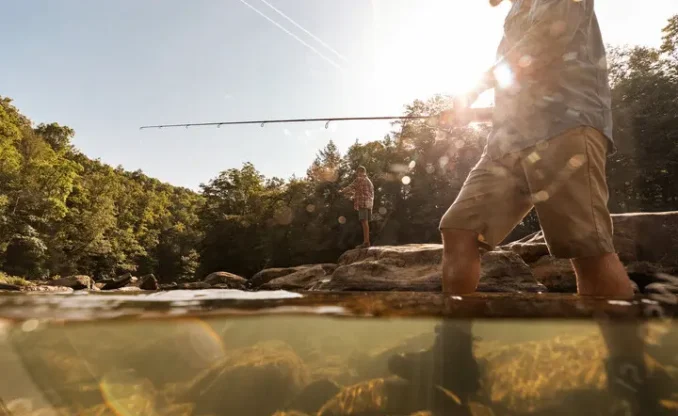Family: Lepisostidae
Common Family: The Gar Family
Common Name: Longnose Gar
Scientific Name: Lepisosteus osseus
Ecological Description
The longnose gar is the most abundant and widely distributed of the ancient gar family – Lepisosteidae. They average 2 to 3 feet in length but occasionally reach up to 5 feet. Their most distinguishing feature is their long, very slim snout and cylindrical cigar shaped body. Round dark spots are scattered over its body but are lacking on its head. Its snout is filled with numerous small sharp teeth, enabling it to easily capture fish, its primary diet. They are generally olive gray above and light below, typical coloration for all gars. Ganoid scales cove their body creating a suit of armor.
Like another ancient fish, the bowfin, longnose gar have a highly vascularized swim bladder that serves as an auxiliary lung, enabling these fish to take in air at the surface by gulping air and absorbing it through internal tissue layers. This primitive adaptation enables longnose gar to survive harsh conditions and utilize habitats with low oxygen that other fish cannot. Longnose gar generally spawn from early to mid-April around 68 F. Gar congregate during spawning season and can become numerous within an area. A 3-foot female will lay more than 35,000 eggs.
Habitat
Longnose gar prefer shallow, weedy, quiet waters. However, they are found throughout West Virginia in most streams, rivers and reservoirs.
Conservation Issues
There are no conservation issues related to longnose gar. Its giant relative, the alligator gar, has been making a comeback in its historic range of the Mississippi River drainage including the Ohio River. Multiple states have re-established this ancient ecologically important fish through re-stocking and conservation efforts throughout its native distribution. There have even been confirmed sightings as recently as 2018 near Huntington, W.Va.
Facts
In some parts of its range, the longnose gar is netted and sold in markets as food fish, but it usually gets limited attention from sport anglers. However, they will readily chase lures often out of curiosity. Crafty anglers utilize a small section of frayed rope as a lure or small panty hose bag with bait without a hook to take advantage of their abundant teeth.
Even without a hook, their teeth will become entangled in the frayed rope or panty hose allowing the angler to reel in their catch. Longnose gar, due to their tough ganoid scales, require tin snips or other sharp implements to cut them open. Once inside, the top “loins” can be removed and prepared using your favorite fish recipe. They are quite good. Give them a try sometime!
The West Virginia length record for Longnose Gar is 52.25 inches (Shelby Searls, 2006, Mark A. Foster, 2012) and the weight record is 19.08 pounds (Michael Shan Casey, 1993).
Similar Species
Longnose gar can be often be confused with their similar sub-species and even species of muskies and pikes due to their closeness in body shape and potential size. An obvious difference between the longnose gar and the shortnose is the length of the snout, but it can be deceiving if a longnose of similar size is not available for comparison.



